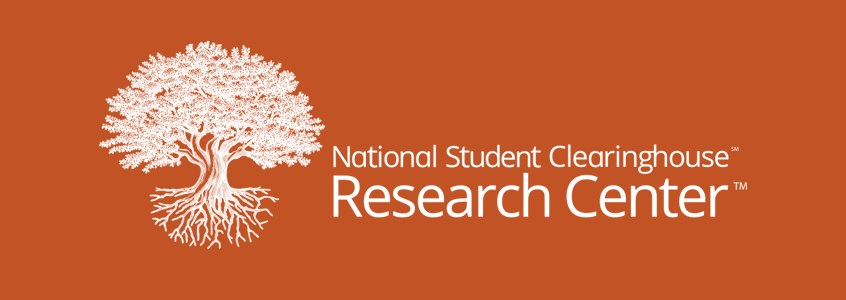- BLOG HOME
- »
- Research Services
- »
- Research Center: Making a Difference with Support from Foundations

Research Center: Making a Difference with Support from Foundations

Doug Shapiro, Executive Director of the National Student Clearinghouse Research Center
As a dramatic shift across higher education occurred during the pandemic, the National Student Clearinghouse Research Center uncovered the constant set of changes in enrollment, transfer, and graduation rates as students were forced to alter their education plans. Not to mention, an economic downturn left many uncertain on whether they could even continue their education.
As schools grappled with their enrollment in flux, the Research Center met the needs of higher education institutions and provided timely research on the pandemic’s impact on student enrollment and pathways during the 2020-21 academic year. The Research Center’s Executive Director Doug Shapiro provides insight on the center’s role during these unprecedented times and what lies ahead in this Question-and-Answer post.
How did the Research Center help academic institutions navigate through the pandemic?
The pandemic was a major crisis for higher education. Schools faced uncertainty about how it would impact their enrollment and ability to operate. Adding to their uncertainty was a real vacuum of information.
We were able to fill that gap with timely information and insights, drawn from the Clearinghouse data which is updated almost monthly by colleges and universities. We were able to provide in nearly real-time, direct indicators on how the pandemic was impacting student enrollment as they considered in-person, remote, hybrid, or pausing their learning altogether.
How have you seen the Research Center’s work evolve in recent years?
Our work has grown dramatically, particularly in the last two years. The most significant change is evolving from a data service provider that focused on responding to requests from schools and colleges to a place where we are now publishing trend reports that provide vital insights to the education community. As a result, our publications have elevated our research, and generated widespread attention among higher education, the media and even policymakers.
Once people see and recognize the potential that the Clearinghouse data holds, they increasingly come to us with their ideas and requests for us to do even more.
What are some opportunities to expand the Research Center’s work to help address some of the critical issues facing higher education, such as equity and access?
There’s been so much attention in the areas of equity and access, particularly in the last year, and we still have a lot of work to meet the need and fully use the data to examine these issues.
For example, we have information on student academic preparation, from institutions participating in our Postsecondary Data Partnership (PDP). Still, we have limited insight into family income or other dimensions that could help the schools and colleges improve equity and access for students from all backgrounds.
The other important thing is understanding employment and economic outcomes after students move through higher education programs. We are working with several organizations that help us gain insights into employment and earnings for learners and help us better understand the value of the learning they received in higher education.
Why is it important to fund research for higher education in our country?
Education is a highly complex process. It’s hard to know how you’re doing if you don’t use data. Further, there are many types of schools, programs, and learners, and every learner has different goals. Lumina Foundation, for example, has been helping us to build data resources that inform states and institutions about the large population of learners who have enrolled in college in the past, but never earned a degree or other education credential. This allows them to create focused efforts that help such students return and reach their goals. See our Some College, No Degree research for details.
To understand and continually improve educational offerings and services to students, you need trusted data. Our research is dedicated to that idea; the more data we provide to colleges, the better equipped they are to improve their services.
Has the Clearinghouse’s recent research inspired foundations to approach the Clearinghouse about potential projects?
We have had great feedback on our approach to research. One foundation came to us and said how much they value what we are doing with enrollments and tracking students affected by the pandemic. However, they noted that they would like to understand what’s happening with students’ ability to transfer, particularly from community colleges to four-year colleges.
So now, the COVID-19 Transfer, Mobility, and Progress Report, which is a two-year series, because of support from Ascendium Education Group and ECMC Foundation, shows in real-time what’s happening with transfer students.
What’s next for the Research Center, especially over the next fiscal year?
We’re continuing to publish all special COVID analysis reports from last year, including the vital Stay Informed with the Latest Enrollment Information, which provide real-time analysis of enrollments and transfers and improve the level of insights. The publications will continue to grow.
Thanks to the attention that the research publications have garnered in the last year, we have also found ourselves with the opportunity to respond to far more requests for custom research projects. Again, this is because so many different organizations are seeing the reports in the media and saying that they would like to see research at a local level, for example, or see it disaggregated for older students, or even another subset or category.
Why should foundations work with the National Student Clearinghouse?
The partnerships we’ve had with many foundations have been outstanding. They often bring new ideas to us. So many foundations are focused on specific aspects of the educational challenges, specific populations of students or specific communities. Foundations help us do more to draw attention to the data and shine a light on those communities’ distinct successes and challenges. Our partners help us understand how important it is to contribute to better educational outcomes, access, and success for all students and learners.
To support and work with the Research Center to advance education, workforce, and learner success, contact the Research Center.
To understand and continually improve educational offerings and services to students, you need trusted data. Our research is dedicated to that idea; the more data we provide to colleges, the better equipped they are to improve their services.
Doug Shapiro
Executive director, National Student Clearinghouse Research Center
Additional Resources:



